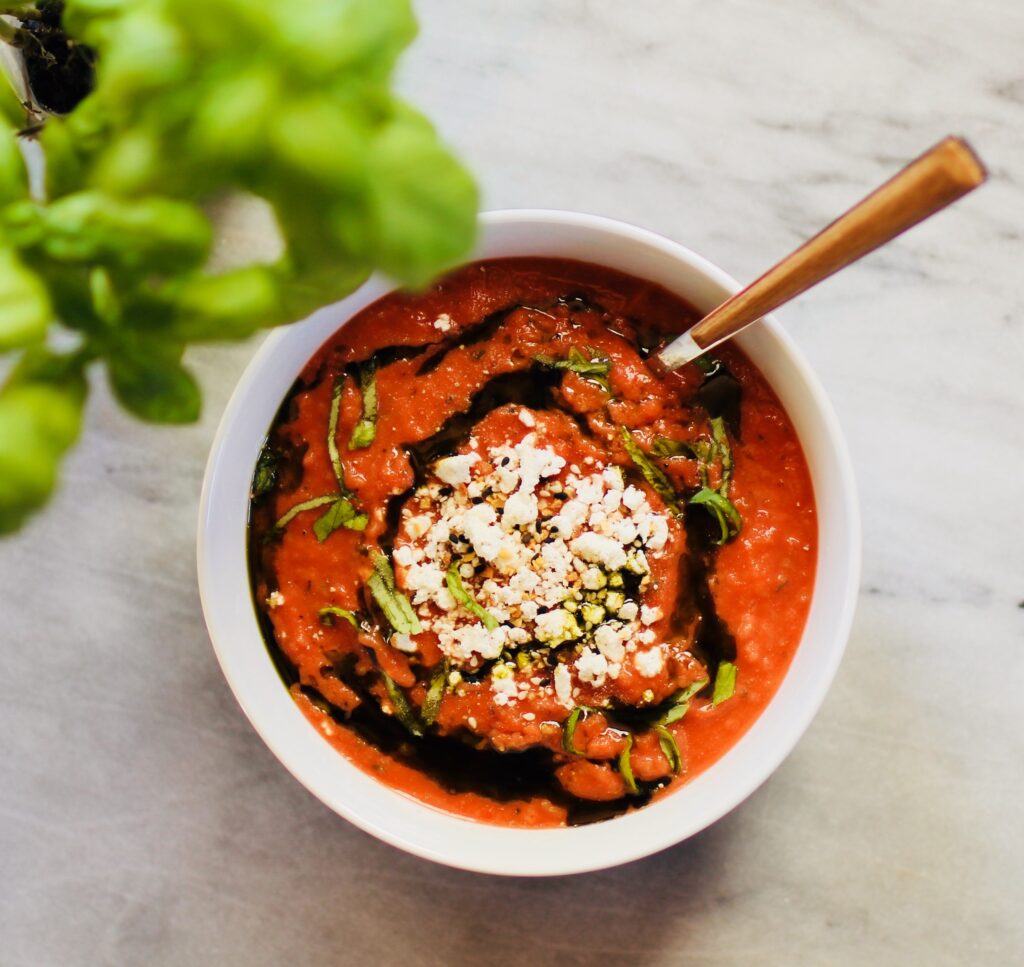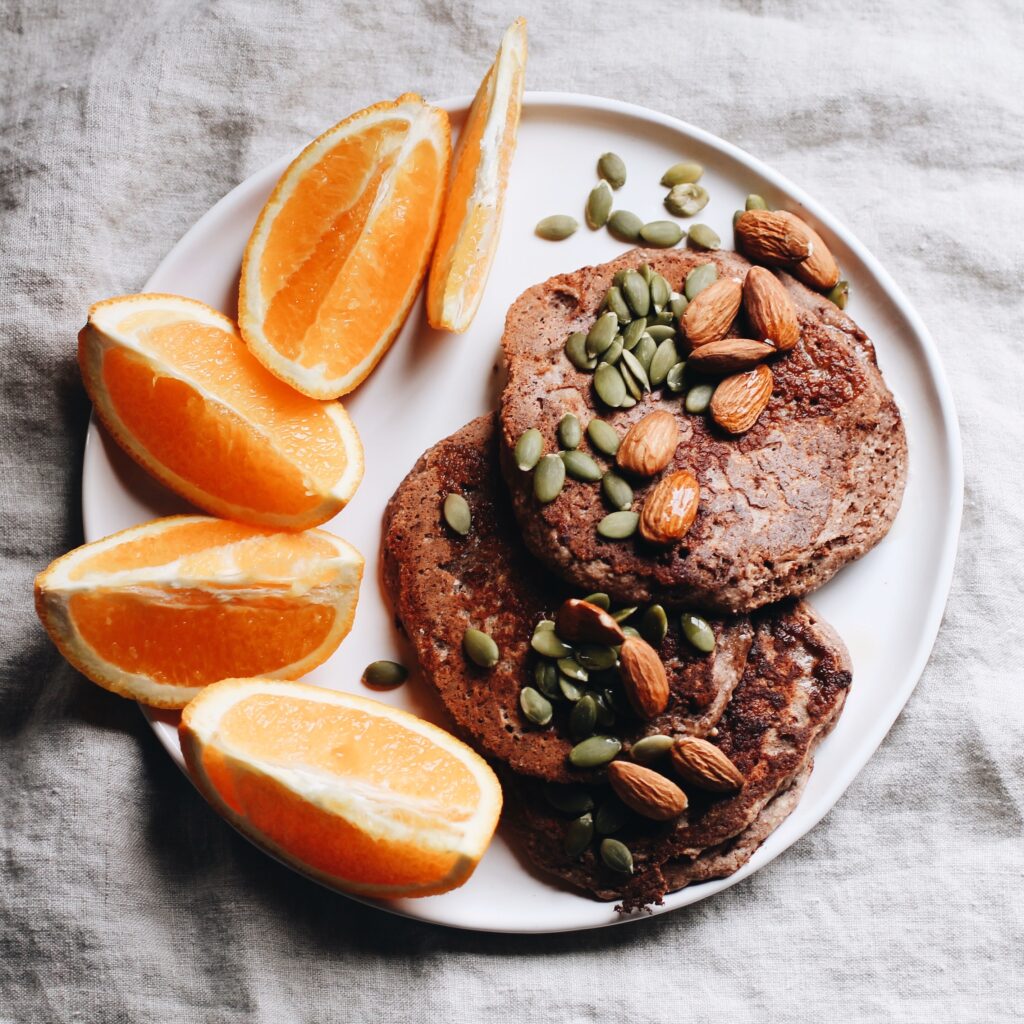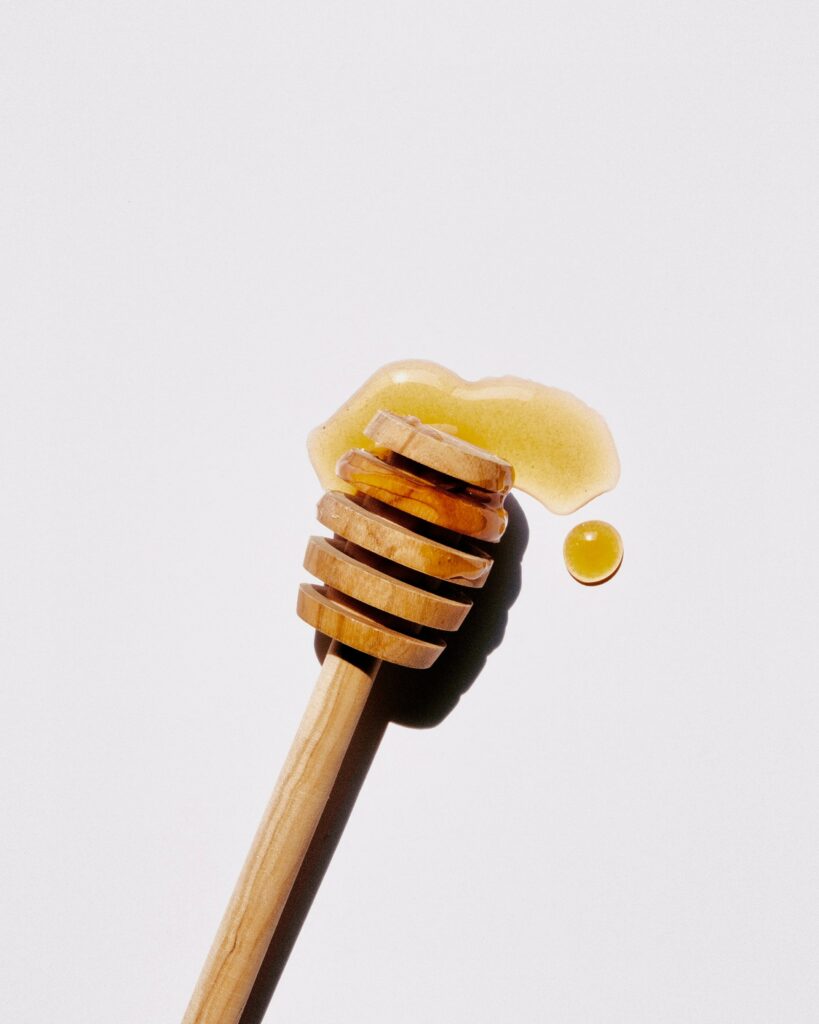Messages like new year, new you cluttering your social feed? You’re not alone. It’s important to remember that your health journey is ongoing (and more importantly, that health looks different on everyone). December isn’t an excuse to forego any semblance of balance, just as January 1st isn’t the start of your juice cleanse. Instead, it’s all about finding a happy medium. Your happy medium. While today’s article is centered on healthy food swaps to live healthier in 2023, this isn’t about a black-or-white approach. Health is nuanced. Ultimately, the goal is to figure out what does (and doesn’t) make you feel your best! At the end of the day, the point is to find joy in eating and being well—a lifestyle that lasts.

All about balance
Most of the time, it’s ideal to reach for real, whole foods—like colorful produce and high-quality protein. After all, eating this way is energizing and nourishing on a cellular level. In many ways, your diet has a profound effect on how you express what’s encoded in your DNA. Said differently: the foods you consume can either turn on or off certain genetic markers. These genetic markers play a major role in your health (think: life or death!). Needless to say, what you eat is important. But given that striving for perfection isn’t the goal, it’s all about finding balance.
what is a balanced approach to eating?
Balanced eating can seem like such an abstract concept. What does balance really mean and look like when it comes to food? The most important takeaway is this: finding and maintaining balance looks different for everyone. For context, imagine a spectrum. On one end of the spectrum, we have the all-in mentality of rigid diets, meal plans, and food rules that feel restrictive. This is the place where you eat “super clean” and avoid all “bad” foods. On the opposite end of the spectrum is not paying attention to your nutritional needs. Sometimes, this can look like eating anything you want, whenever you want.

Mindful, intentional choices
Rather than swing from one end of the spectrum to the other, you want to hover right in the middle. This is where you’re making mindful, intentional food choices. This mentality allows you to nourish yourself without needing to restrict, count calories, or cut specific ingredients. Hovering right in the middle also gives you the flexibility to enjoy foods you like without ignoring your nutritional needs. At the end of the day, striving for balance helps bring awareness to what your dietary needs and wants. It’s about making intentional choices to keep you in the happy medium!
What Is Real Food?
Before we dive into healthy food swaps to live healthier in 2023, let’s talk about the power of eating real, whole foods. Forget old-school and outdated rules, like low-fat this and low-calorie that. Instead, learn the difference between diet food (that’s marketed to us as healthy!) and what is actual, real food. In essence, it’s food in its most natural state. It’s natural, simple, and comes from the earth—or eat what grows on the earth. These foods have existed for thousands of years, nourishing our ancestors. They’re often one-word foods or have labels that list a handful of ingredients (all of which are easy to read). In terms of what isn’t real food, it’s essentially everything else. It’s processed food, diet food, etc. When you look at the ingredient list, it has words you can’t pronounce and reads a mile long.

The Benefits of Eating Real Food
The truth is, processed foods with long ingredient lists are packed with additives, preservatives, sugar, and industrial seed oils. These are inflammatory to the body. In other words, they’re hard for your body to digest and assimilate. Keeping it simple, on the other hand, is kind to your body. The benefits are a dime a dozen, but eating real food means you’re getting important vitamins and minerals, fiber, and at least one macronutrient (carbs, protein, and healthy fats). Eating real food can also help curb sugar cravings, aid in satiation, and help balance blood sugar. Best of all, healthy food swaps don’t have to break the bank.

8 Processed Food Swaps
Curious to know a few of my favorite processed food swaps? From savory to sweet, these brands know how to make your favorite snack foods taste delicious, without artificial ingredients. These healthy food swaps won’t make you miss the other versions (promise!).
| Swap This… | …For This |
| Wheat Thins | Simple Mills Crackers |
| Cheeze-Its | Annie’s Cheddar Squares |
| Oreos | Catalina Crunch Sandwich Cookies |
| Bisquick Pancake Mix | Birch Benders Original Pancake Mix |
| Fruit Loops | Three Wishes Cereal |
| Clif Bar | GoMacro Bars |
| Orville Redenbacher’s Classic Popcorn | LesserEvil Popcorn |
| Coca Cola | Olipop Vintage Cola |
Crowding out unhealthy foods
If you can’t imagine the thought of giving up your favorite foods, I hear you. As mentioned, this isn’t all-or-nothing. However, one way to start eating more real, whole foods, is this: increase the portion of healthy foods you eat—while continuing to eat some of your favorite processed foods—but in smaller portions. When you fill up on fruits, vegetables, whole grains, high-quality protein, and water, your cravings for junk foods will slowly subside. Not to mention, when you’re satisfied and full-on, fiber-rich produce and grains, you tend to snack less. This concept is known as “crowding in” healthy foods and “crowding out” junk foods. It’s an approach to healthy eating that focuses on adding in nutritious foods and naturally crowding out less nourishing options.

10 Foods to swap
Without further ado, below are 10 common foods that cause blood sugar issues, insulin spikes, and/or inflammation in the body. However, take all of these with a grain of salt. You may be able to digest them just fine! We are all bio-individuals with unique nutritional needs.
1. Industrial Seed Oils
Like sugar and trans fats, experts are aware of several dietary culprits that explain rapidly rising rates of chronic disease. One commonly consumed food that receives little attention? Industrial seed oils. Industrial seed oils are highly processed. They’re extracted from soybeans, corn, rapeseed, cottonseed, and safflower seeds. Unlike healthy fats, these seed oils raise our omega-6-to-omega-3 fatty acid ratio, oxidize easily, and contain harmful additives. Almost always, they’re derived from GMOs. And when they are repeatedly heated, they are even more toxic. Stick with healthy fats, instead! A few of my favorites are olive oil (great for salads), avocado oil (ideal for roasting), and coconut oil (delicious for sautéing).
2. Processed Meat
When it comes to limiting foods that cause inflammation, look no further than conventionally-raised animals that are turned into processed meat. Think: Bacon, hot dogs, and ham. Unfortunately, ultra-processed foods, like conventional hot dogs, have been associated with higher blood levels of inflammatory markers, like CRP (which cause chronic inflammation). More so, frequently eating processed meat is associated with an increased risk of many chronic diseases, like high blood pressure and heart disease. When in doubt, choose lean cuts of organic deli meat, opt for pasture-raised bacon, and skim the ingredient list for added sugars. If you’re looking for a new sausage brand, one of my new favorites is Seemore (they’re loaded with veggies, too!).
3. High-Fructose Corn Syrup
High-fructose corn syrup, also known as HFCS, is a sweetener made from corn starch. Many experts believe that added sugar and HFCS are key factors in today’s obesity epidemic. In essence, HFCS (and table sugar) contain fructose and glucose. Your body metabolizes fructose differently than glucose, and consuming too much fructose can lead to health problems. It increases your risk of fatty liver disease, an excessive intake is linked to diabetes, and it contains no essential nutrients. Instead, swap HFCS for stevia, monk fruit, xylitol, yacon syrup, maple syrup, or honey.
4. Artificial Sugars
Speaking of sugar, artificial sugars are made from chemicals that do more harm than good. In fact, animal studies have convincingly proven that artificial sweeteners cause weight gain, brain tumors, bladder cancer, and many other health hazards. A few examples are aspartame (NutraSweet, Equal, etc.), sucralose, maltitol, maltodextrin, and saccharin (Sweet-n-Low). All of these can increase blood glucose/insulin levels, cause indigestion and weight gain, spark allergies, decrease beneficial bacteria in the gut, and more. Ultimately, they provide no nutritional value. My favorite healthy food swaps are honey, stevia, monk fruit, and xylitol.
5. Artificial Trans Fats
Artificial trans fats are amongst the top foods to ditch. They’re easily the unhealthiest fats you can eat. They’re created by adding hydrogen to unsaturated fats, which are liquid, to give them the stability of more solid fat. On ingredient labels, trans fats are often listed as partially hydrogenated oils. Most margarine contains trans fats, and they are often added to processed foods to extend shelf life. Unlike the naturally occurring trans fats found in dairy and meat, artificial trans fats have been shown to cause inflammation and increase disease risk. Healthy swaps include ghee, avocado oil, olive oil, and coconut oil.
6. Sugary Beverages
In addition to blood sugar spikes from food, sodas do the same. They’re high in carbs without providing other essential nutrients, like fiber. They’re loaded with fructose. And fructose is linked to insulin resistance, metabolic changes, and diabetes. Furthermore, soda doesn’t aid in fullness. Due to fructose, it does not lower the hunger hormone, ghrelin, or stimulate fullness in the same way as glucose (the sugar found in sweet potatoes, for example). Ultimately, sugary soda contains no helpful nutrients. Need your soda fix? Try Poppi, Olipop, or Zevia.
7. GMO Corn
Did you know that 85% of the corn produced in the United States is genetically modified? To produce a genetically modified organism—or GMO—scientists take genes from one plant or animal and insert them into the DNA of another. This technology produces crops that grow faster, larger, and are more resistant to herbicides and disease. It possesses its own built-in pesticide, called Bt. When insects ingest GMO corn, the Bt contained in the corn kills the pests.
Although this built-in toxin offers a significant advantage to farmers (it eliminates the need to spray crops with pesticides), it also means humans are consuming Bt with every bite of corn. In turn, GMO corn can cause an immune response in humans. When possible, opt for organic corn or choose tortilla chips made from beans (I love Beanitos) and tortillas made from an alternative flour (like Siete).
8. GMO Soy
Much like GMO corn, GMO soy is a hot topic for debate. Research shows it may contain fewer nutrients and more herbicide residues than conventional soy. Currently, 81% of the global soybean crop is genetically modified, and most of it ends up in farmed animal feed. The GMO soy consumed by farmed animals is utilized as a source of protein. It doesn’t magically evaporate. Instead, it ends up on your plate. Therefore, be mindful of buying conventional meat. At any rate, GMO soybeans contain compounds that may lower the body’s ability to absorb the vitamins and minerals they contain. When possible, consume organic soy and aim for minimally processed soy, like organic edamame and tempeh (fermented soy).
9. SUgary Yogurt
That strawberry swirl fruit-on-the-bottom or chocolate chip crunch topping in your yogurt? It often packs a sugary punch. In fact, some flavored yogurts contain more sugar in one serving than some candy bars. Plain, organic yogurt contains gut-promoting live bacteria, but when sugary jams and “fruit” are added, you’re also consuming table sugar and other processed ingredients Healthy flavored yogurt, on the other hand, contains minimal added sugar, no carrageenan, avoids preservatives, and does not contain highly processed gums or thickeners. When in doubt, choose plain, whole milk yogurt (or Greek yogurt). My favorite flavored yogurt brands are Siggi’s, Wallaby, and Maple Hill.
10. Agave Nectar
While agave nectar may seem like a healthier option, consider this: Your body is well equipped to handle the small amounts of fructose found in fruit, but agave nectar is a different story. In essence, agave nectar isn’t a healthful alternative to table sugar. As it turns out, agave has a higher fructose content than any other common sweetener (more than HFCS!). Because of its reputation as a “natural” sweetener, it is now widely used in products claiming to be good for health. Stick to maple syrup or honey. For an even lower glycemic option, liquid stevia or monk fruit. Healthy food swaps can still be sweet!

This post contains affiliate links. Thank you for supporting Wellness with Edie!
This article is for informational purposes only. It is not, nor is it intended to be, a substitute for professional medical advice, diagnosis, or treatment and we recommend that you always consult with your healthcare provider.



Leave a Reply